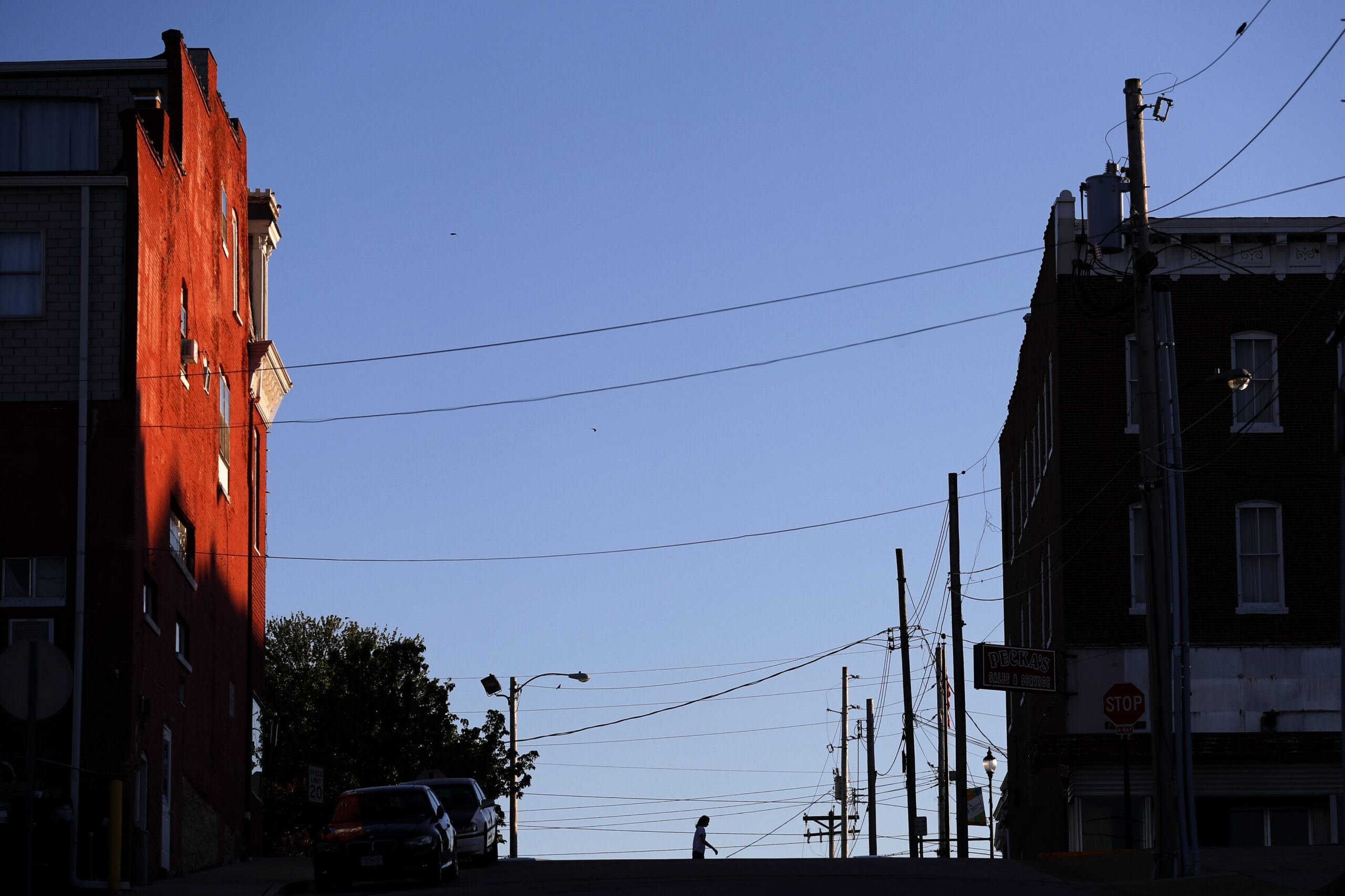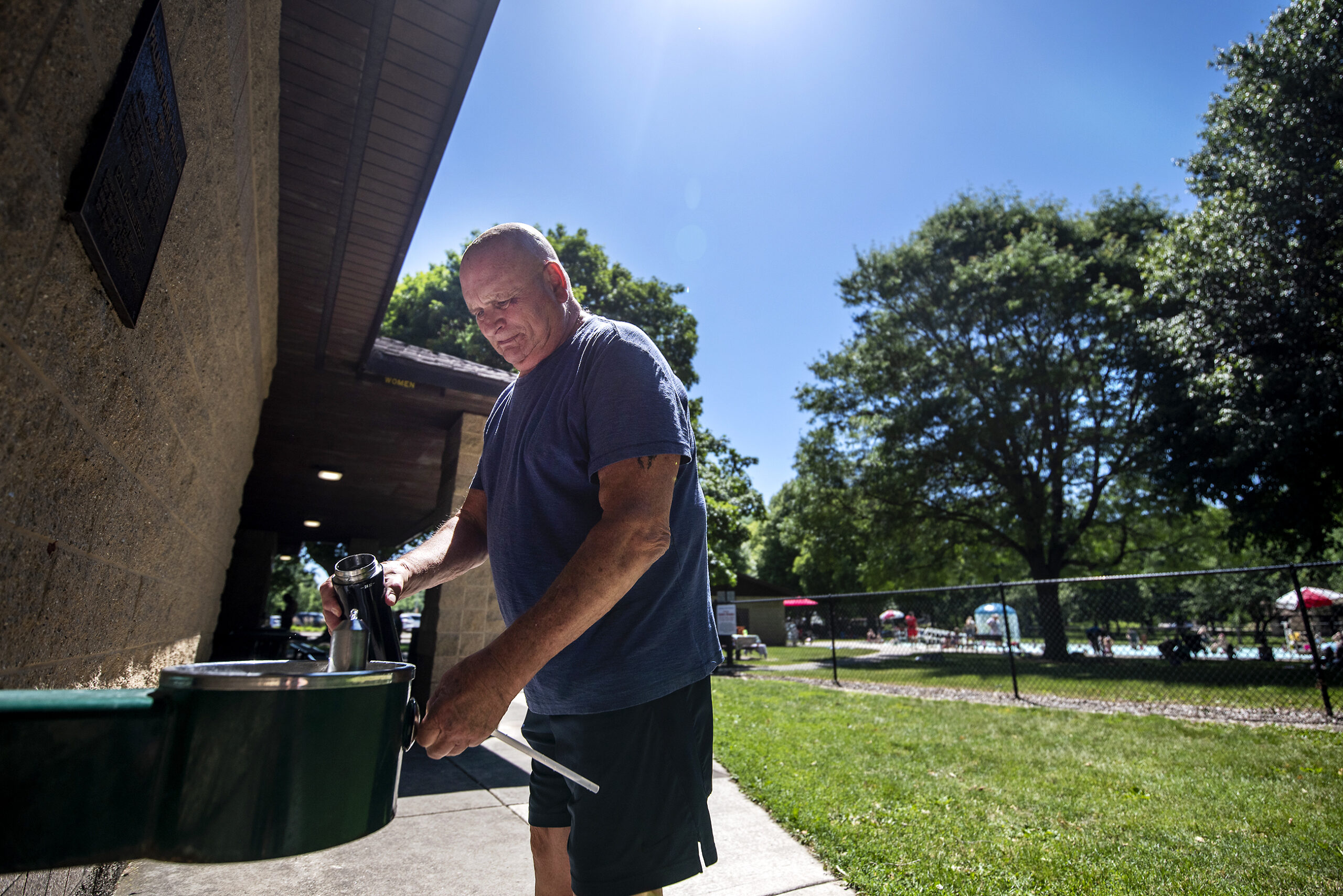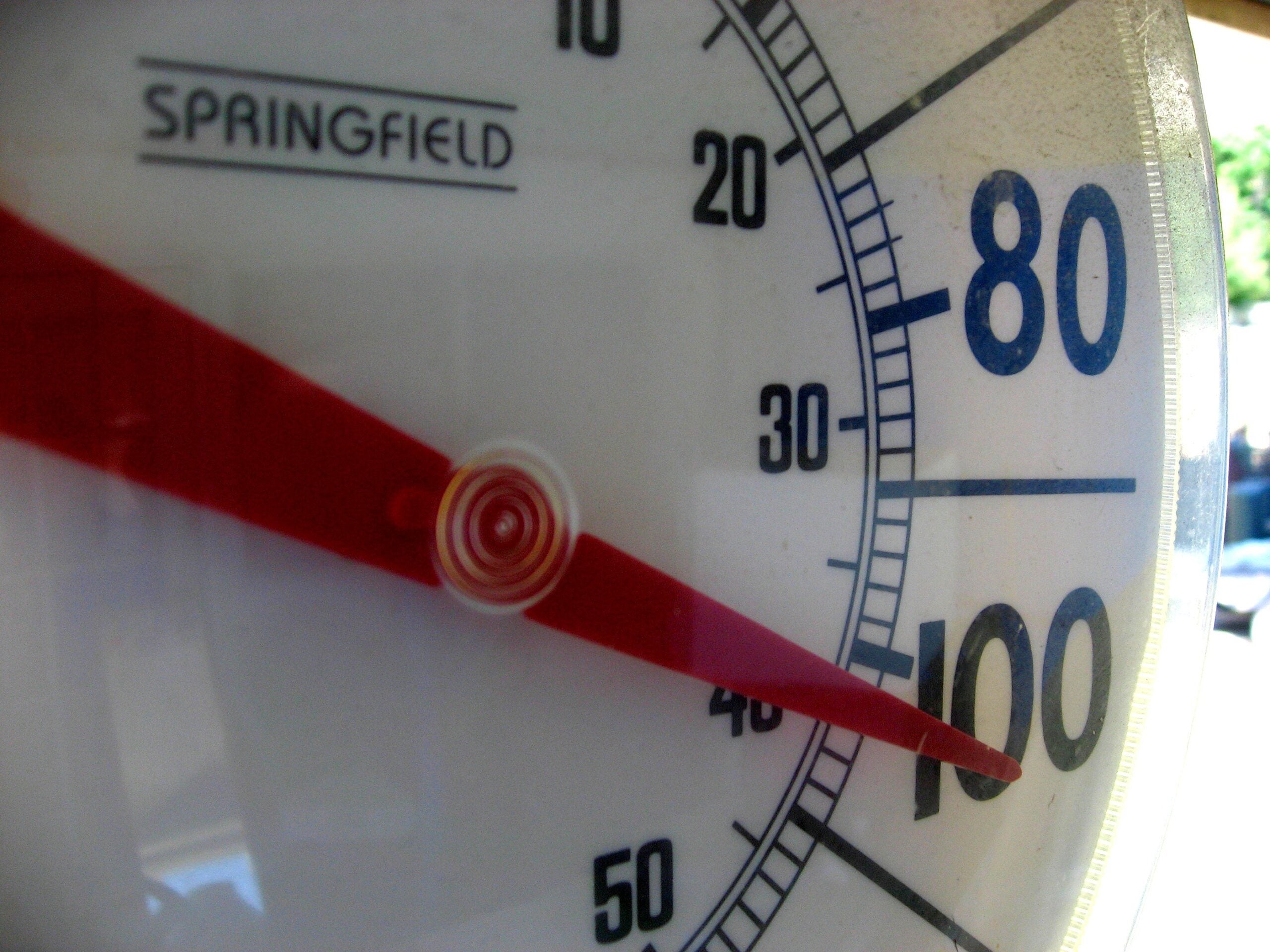Milwaukee’s temperature hit 101 degrees Wednesday. This high beat the previous record of 98 degrees, which was set on the same date in 1947.
The Midwest is currently covered by a heat dome stretching from Texas to Wisconsin. Record-breaking temperatures sitting high in the atmosphere have Wisconsinites in the southern half of the state under heat warnings. Milwaukee and Madison are under excessive heat warnings through Thursday evening.
Kevin Wagner, a meteorologist with the National Weather Service, said high humidity combined with the high temperatures have the heat index, or feels-like temperature, in Milwaukee between 107 and 112 degrees on Thursday. That is unseasonably warm for this time of year.
News with a little more humanity
WPR’s “Wisconsin Today” newsletter keeps you connected to the state you love without feeling overwhelmed. No paywall. No agenda. No corporate filter.
“It’s pretty uncommon to see these high temperatures in Wisconsin, especially this late into the season,” Wagner said.
Triple-digit temperatures are dangerous for everyone. But they disproportionately harm people who live alone with few outside contacts.
Richard Keller, professor of medical history and bioethics at the University of Wisconsin-Madison, said social isolation is the greatest risk factor for dying of heat stroke.
“Especially if they’re living on their own in marginal conditions without access to air conditioning and without access to a steady social network, they can often find themselves with no one to help if they find themselves in crisis,” Keller said.
Socially isolated people can include people who have a mental illness and elderly people.
“As we age, we also tend to age out of our social networks, and so to some extent, into isolation as our close friends and family around us die,” Keller said.
People over the age of 65 or people who take certain kinds of medication for conditions like Parkinson’s disease and schizophrenia are also at a higher risk of dying from heat stroke. Their bodies are less capable of regulating body temperature and medications can exacerbate dehydration.
“Every one of these deaths is preventable. The body only really requires a couple of hours of cooler temperatures and it’s resilient enough to bounce back from the threat of extreme heat,” Keller said.
According to the Wisconsin Emergency Management, there were 14 heat-related deaths in the state last year, and 700 Wisconsinites visited emergency rooms for heat-related illness. The Centers for Disease Control and Prevention Heat and Health Tracker shows that heat-related visits to emergency rooms in the six-state Midwest region skyrocketed on Wednesday to a rate of 738 visits per 100,000 people, up from 22 a week earlier.
Heat waves in Wisconsin are not unheard of but not commonplace. In the summer of 1995, 141 people died as a result of a three-day heatwave. In Milwaukee County, 14 people have died of hyperthermia — or high body temperature — over the last decade, according to the county medical examiner.
The Milwaukee fire department said it responded to heat related calls this week but the exact numbers aren’t available at this time. No heat related deaths have been reported.
Keller said systemic issues of income inequality, ableism and agism work against vulnerable people during heat waves. He said reaching people who sit on the margins of society before periods of extreme heat can help save lives.
“What we need to do is recognize that these are people who may present social difficulties, but who are also human beings. People who are deserving of our compassion and deserving of our attention,” Keller said.
Wisconsin Public Radio, © Copyright 2026, Board of Regents of the University of Wisconsin System and Wisconsin Educational Communications Board.







